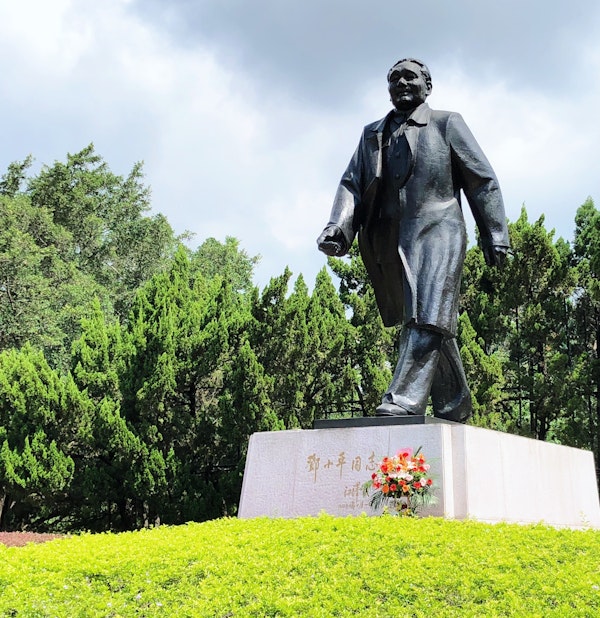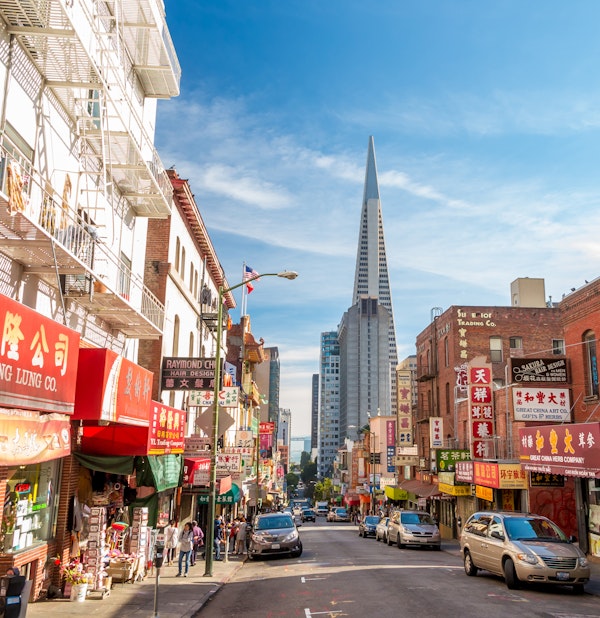by Matthew Rooney
China has taken steps to become more nationalistic, authoritarian, and protectionist. As the United States faces an aggressive, revisionist China, how can we avoid open conflict?
Since President Richard Nixon opened formal relations with China in 1972, most Americans have thought of China as a large but impoverished maker of cheap consumer goods. As China opened its economy to market forces and entered a long period of rapid economic growth, creating a middle class larger than the population of the United States, Americans came to view China as a large potential market for American exports and an enticing investment opportunity.
American leaders have expressed confidence that embracing China into the U.S.-led international system would induce China to become a “responsible stakeholder” in global prosperity and to modernize away from its outdated model of political repression, state-dominated industrial policy, and closed markets.
The last decade has shattered this optimistic view.
China’s economic success has emboldened those in the ruling Communist Party who insist that it is the result of the party’s policies and flatly reject convergence towards western norms regarding economic and political freedom. Xi Jinping’s rise to China’s presidency in 2013 marked the ascendance of this faction, which is determined to cement party control of China’s economy.
China’s economic success has emboldened those in the ruling Communist Party who insist that it is the result of the party’s policies and flatly reject convergence towards western norms regarding economic and political freedom.
Under Xi, the party has explicitly announced its aim of achieving technological dominance in the world economy. Strategies ranging from forced technology transfer from western firms to outright intellectual property theft are designed to catch up with the United States.
Chinese economic policy has shifted to restore the primacy of the state-owned enterprise sector at the expense of private-sector businesses. And Xi has advanced a strikingly assertive foreign agenda, establishing quasi-imperial economic relations with dozens of countries through his “Belt and Road Initiative” and building naval bases throughout the South China Sea and the Indian Ocean.
 Russian President Vladimir Putin meets with Chinese President Xi Jingping in 2017. (via kremlin.ru)
Russian President Vladimir Putin meets with Chinese President Xi Jingping in 2017. (via kremlin.ru)
All of a sudden, it seems, China is stridently nationalistic, authoritarian, and protectionist. All of a sudden, China is omnipresent: as an aggressive but secretive investor not just in its near abroad in East and Southeast Asia but also in Latin America and Africa; as the world’s top purchaser of natural resources; as an exporter of increasingly sophisticated manufactured goods, particularly in the technology and telecommunications sectors; and as a disruptive geopolitical force, extending its “territorial waters” through man-made islands in the Pacific Ocean. All of a sudden, it seems, we face an aggressive, revisionist China, wanting not just to sit at the top table in geopolitics and global markets but to replace America at the head of the table.
More and more commentators in both countries have begun to believe that China and the United States are drifting into a new Cold War. Others, like Harvard’s Graham Allison, warn of a “Thucydides Trap” – analogous to ancient Sparta and Athens and other historic rivalries – in which an incumbent hegemon and a rising great power inevitably come into open conflict. America now faces a pressing long-term challenge: How do we get to the year 2100, and beyond, without an unwanted conflict with China?
America now faces a pressing long-term challenge: How do we get to the year 2100, and beyond, without an unwanted conflict with China?
The nature of the matter
We should start by being clear-eyed about the nature of the U.S.-China contest.
With the rise of Deng Xiaoping as China’s paramount leader in the late 1970s, China’s top priority was delivering greater levels of material well-being for its people. As centrally-planned communist dictatorships around the world crumbled a decade later, the success of the Western economic model – relatively free markets at home, openness to international trade, and limited government – became too obvious to ignore. China responded by tentatively opening its economy to market forces, and achieved a flowering of economic growth that sustained itself over three decades.
 A statue of Deng Xiaoping in Shenzhen, China. (Shutterstock)
A statue of Deng Xiaoping in Shenzhen, China. (Shutterstock)
The global financial crisis of 2008 contributed to a shift in economic thinking in Beijing. The American model was suddenly tarnished. China, on the other hand, grew successfully through the crisis, in part through the largest peacetime state-directed stimulus program in history. Chinese leaders, and a number of leaders in other countries, came to think of China’s state-led industrial policy and mercantilist approach to trade as a superior model for long-term growth.
On this background, it’s clear the disagreement between America and China is not really about bilateral trade deficits, purchases of agricultural commodities, or even intellectual property theft. It’s a contest between two divergent, mutually exclusive, and irreconcilable visions of how to organize the relationship between the individual and the state to generate growth and prosperity.
The outcome of this contest is not foreordained. China brings formidable assets to its drive for economic leadership in the world. It will almost surely become the world’s largest economy by the 2030s at the latest, and already is larger than the United States in purchasing power-adjusted GDP.
China produces eight times more graduates in STEM fields each year than the United States does. It invests more in research and development than Germany, Japan, and South Korea combined. Its new installation of industrial robots far exceeds the combined totals of America and Europe. It passed the United States in aggregate venture capital investment in startups last year. Experts believe China now leads the U.S. in several areas of artificial intelligence research.
China produces eight times more graduates in STEM fields each year than the United States does. It invests more in research and development than Germany, Japan, and South Korea combined. Its new installation of industrial robots far exceeds the combined totals of America and Europe.
Moreover, the Chinese Communist Party has proved, in the words of Financial Times columnist Martin Wolf, “astonishingly flexible and pragmatic.” It has cultivated an enormous cadre of well-trained policy makers who appear unified around the party’s long-term vision for the country. It has largely co-opted much of the country’s best business and intellectual talent. In recent years, it has demonstrated an ability to address seemingly intractable challenges like rising economic inequality and pollution.
While U.S. leaders and the American public increasingly voice doubts about whether the United States should or even can remain the world’s leading economic and political power, Chinese officials seem virtually unanimous in their confidence that China will become the dominant power in East Asia in the near future, and in the world as a whole in coming decades.
The stakes in this contest are high. Freedom House’s worldwide index of political and economic freedom has declined for the last 13 years in a row – a trend warmly embraced by the Chinese Communist Party. The examples of Turkey, Hungary, and other countries offer warnings of what might be in store for other liberal democracies in the West if the Chinese model shows it can deliver the goods more effectively than the American model can.

Answering the China challenge
The good news: America’s best strategy for countering this challenge is to play to our historic strengths, and to pursue measures we would be wise to follow even in the absence of a rising China.
First and foremost, America should focus on getting its domestic house in order. This starts with sweeping fiscal reform to reduce the federal government’s increasingly dire fiscal deficits.
First and foremost, America should focus on getting its domestic house in order. This starts with sweeping fiscal reform to reduce the federal government’s increasingly dire fiscal deficits.
On its current trajectory, the national debt will crowd out private-sector investment, slow America’s economic growth, and invite severe financial crises in future decades. Growing deficits distort financial decision-making across the economy, prioritizing current consumption over future investment, and eroding the market’s ability to scale promising innovations.
And, our political system’s inability to set rational, long-term priorities provides a poor foundation for convincing people around the world that America’s political-economic model represents a better bet than China’s.
Putting our house in order also means shoring up America’s education system, increasing public-sector investment in research, restoring greater private-sector competition, and improving upward mobility for disadvantaged Americans.
A second priority for America is to double down on our commitment to a relatively open, rules-based global economic order. Openness includes sustaining a robust trading relationship with China. A deliberate policy of “de-coupling” the U.S. and Chinese economies would be pointless and profoundly dangerous. China would develop alternative sources – principally domestic – for needed imports, such as semiconductors.
America [should] double down on our commitment to a relatively open, rules-based global economic order. Openness includes sustaining a robust trading relationship with China. A deliberate policy of “de-coupling” the U.S. and Chinese economies would be pointless and profoundly dangerous.
Additionally, an American policy of frustrating the legitimate aspirations of the Chinese people for improved well-being would reinforce the widespread suspicion that the U.S. government aims to “contain” China. Again quoting Martin Wolf, it would risk “turning a manageable, if vexed, relationship into an all-embracing conflict, for no good reason.”
America’s commitment to the rules-based international system we created in the early postwar decades means playing on familiar terrain with home-field advantage, buttressed by allies. When the U.S. and other western countries have pursued measured actions against Chinese firms at the World Trade Organization, they’ve typically prevailed – and China has often complied with WTO rulings. Shifting to a mercantilist, no-holds-barred game, on the other hand, means handing the initiative to the Chinese Communist Party and entering into a game that America generally doesn’t play well.
A third priority is investing in America’s tremendous “soft power” edge over Xi Jinping’s China. There are good reasons why half of all the Chinese students who’ve gone abroad to study since 1987 have never returned to China, while the United States remains by far the preeminent destination for talented people everywhere. China’s recent signature policies – grading every citizen with a “social credit” score for political obedience, imprisoning and “re-educating” more than 1 million Muslim Uighurs, manipulating “Belt and Road” partners into unsustainable debt arrangements – have hardly burnished the party’s brand.
China’s recent signature policies – grading every citizen with a “social credit” score for political obedience, imprisoning and “re-educating” more than 1 million Muslim Uighurs, manipulating “Belt and Road” partners into unsustainable debt arrangements – have hardly burnished the party’s brand.
 Chinatown district of San Francisco — Many Chinese who come to the U.S. for education opt to pursue citizenship, drawn by its freedom and opportunity. (Shutterstock)
Chinatown district of San Francisco — Many Chinese who come to the U.S. for education opt to pursue citizenship, drawn by its freedom and opportunity. (Shutterstock)
A fourth priority is for the U.S. government to focus on targeted policies aimed at what the international advisory firm Pointe Bello calls “attenuation” of the Chinese Communist Party’s capacity for unacceptable behavior in the world. For instance, the United States should push back forcefully on instances of intellectual property theft. It should become more assertive in blocking the takeover of strategically important firms by Chinese state-controlled enterprises. It should continue recent efforts to disrupt the expansion of Huawei and other state-affiliated firms into western communications networks. We should block the further expansion of Chinese government-backed “Confucius Institutes” that promote Chinese culture in the U.S. and crack down on Chinese efforts to intimidate or conduct surveillance of Chinese students or China-focused scholars.
The United States should push back forcefully on instances of intellectual property theft. It should become more assertive in blocking the takeover of strategically important firms by Chinese state-controlled enterprises.
The long haul
We must settle in for the long haul. But we should move forward with greater confidence in the enduring strengths America brings to the table. A market economy in which decentralized producers focus on catering to evolving consumer tastes is a better bet than a repressive regime in which a party bureaucracy calls the tune and blocks the free flow of ideas.
In coming decades, an increasingly powerful China will establish a place for itself among the nations of the Earth. America cannot prevent this from happening and shouldn’t try. Rather, we should prepare ourselves for a complex relationship that will require the United States to cooperate with China in some spheres, compete in others, and refuse to accept unacceptable behavior in still other areas, sometimes simultaneously. Our history suggests we’re up to the challenge, provided we lay the right foundation and play to America’s many strengths.
No comments:
Post a Comment